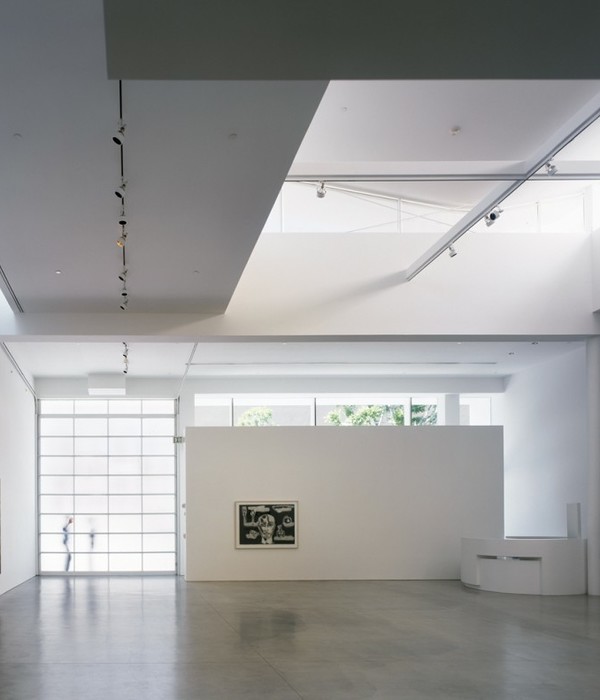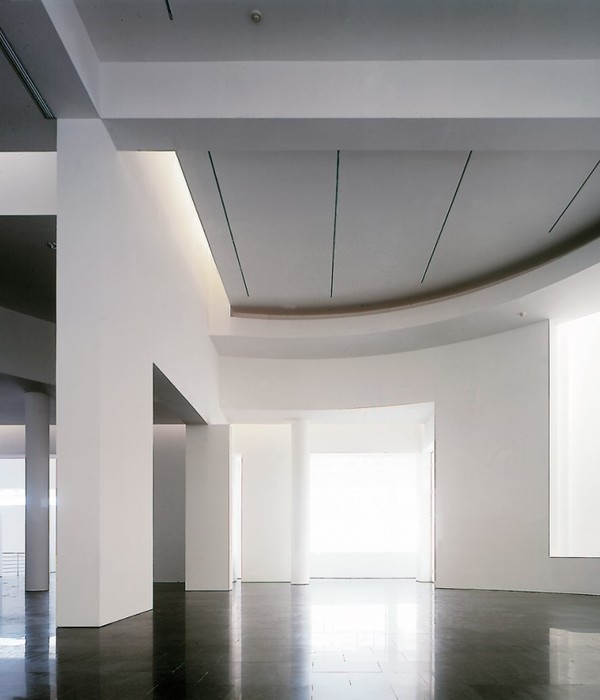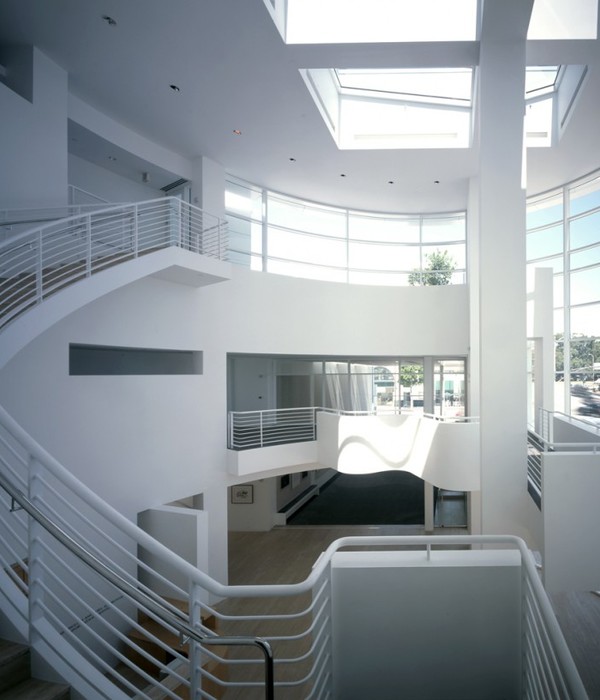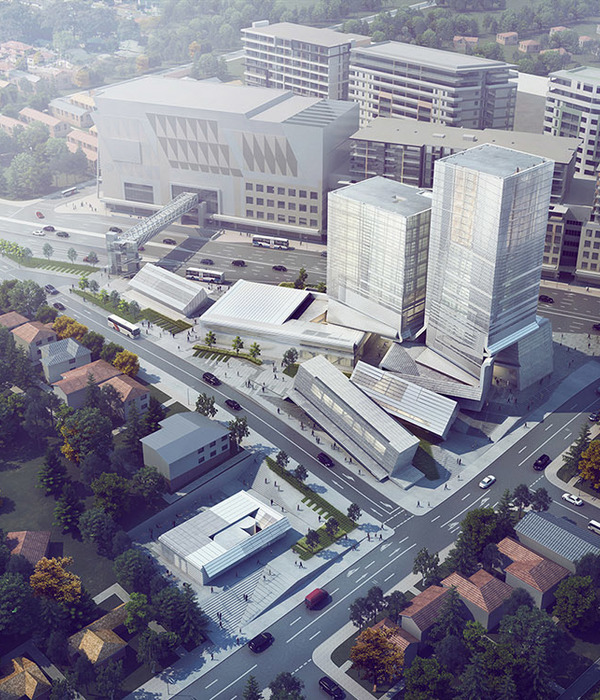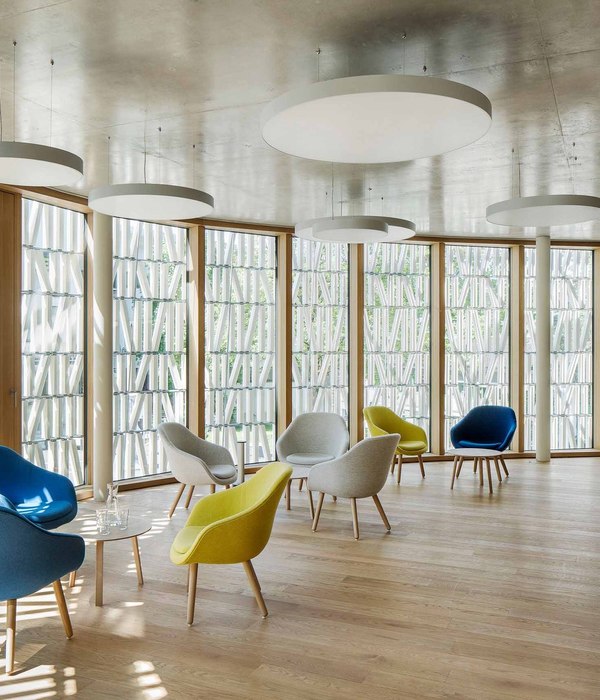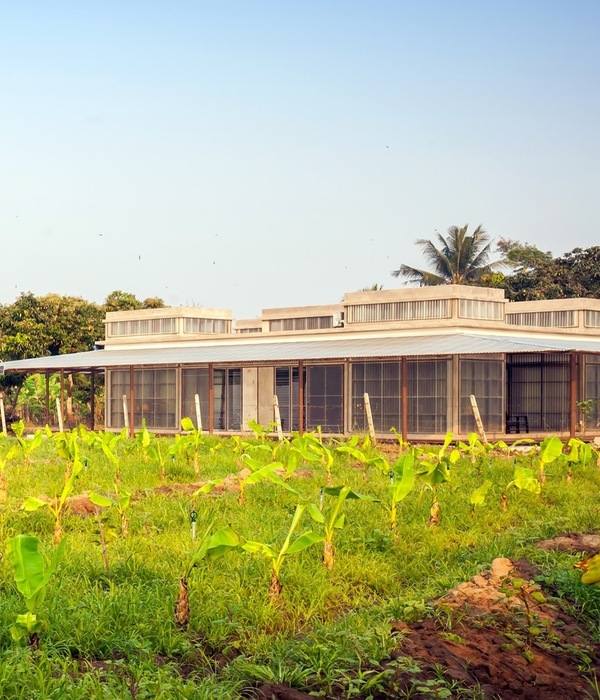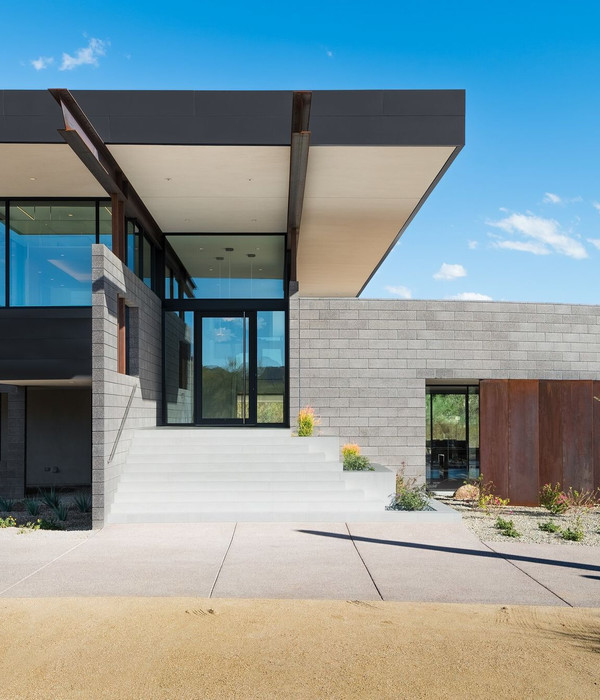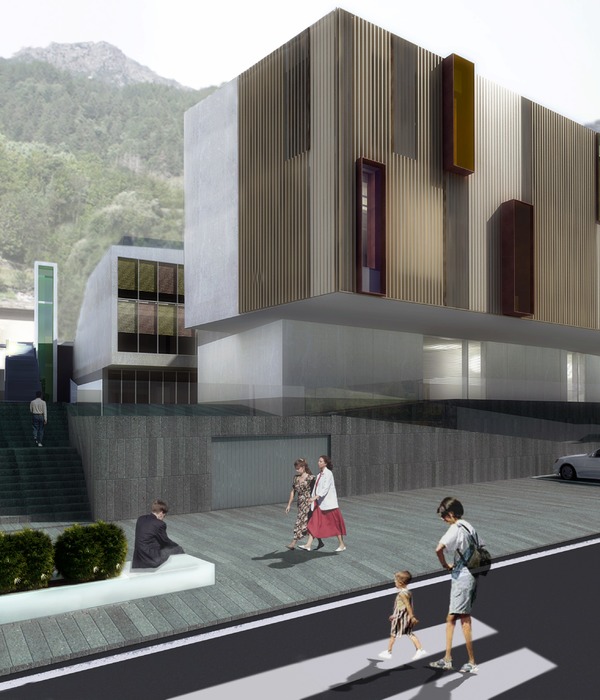架构师提供的文本描述。文化中心位于中国西南部贵州省省会贵阳30公里处的契田乡村。该村有四百多年的历史,以用当地材料建造的“石屋”而闻名于世。在生活在这个村庄的207个家庭中,有41个家庭属于苗族(苗),这是中国最古老的少数民族之一,他们大多居住在贵州省。文化中心外的广场被河流环绕,经常用作当地苗族舞蹈和戏剧表演的舞台。
Text description provided by the architects. The cultural center is located in the rural Chetian Village, 30 km from Guiyang, the capital of Guizhou province, in South-West China. The village has more than 400 years of history and is famous for its 'stone houses' built with local materials. 41 families, out of the 207 living in the village, belong to the Miao (苗) ethnic minority, one of the oldest minority groups in China, most of whom live in Guizhou province. The square outside the cultural center, surrounded by the river, is often used as a stage for local Miao dance and drama performances.
© Jingsong Xie
(三)景松
© Jingsong Xie
(三)景松
文化中心的建筑以40厘米厚的墙为特征,是根据当地的传统方法建造的,采用的是来自村庄坑的石头。这块石头有一种非常独特的蓝色调,这就是为什么它通常被称为“蓝石”的原因。它来源于沉积岩,其主要成分是石灰石和白云石。石的强烈和强迫性的存在创造了一个亲密的内部空间,并显示建筑师对历史砖石传统的切田村深深的尊重。
The architecture of the cultural center is strongly characterized by 40 cm thick walls, built according to the local traditional methods, using the stone coming from the village's pit. The stone has a very unique blue shade, which is why it is commonly called 'blue stone'. It comes from sedimentary rocks and its major components are limestone and dolomite. The strong and obsessive presence of the stone creates an intimate interior space and shows the architects' deep respect for the historical masonry traditions of Chetian Village.
© Jingsong Xie
(三)景松
© Jingsong Xie
(三)景松
Architects West-line studio
Location Chetian Village, Guizhou, China
Category Cultural Center
Architecture and Interior Design Haobo Wei, Jingsong Xie
Exhibition Design and Curator Martina Muratori
Area 715.0 sqm
Project Year 2015
Photographs Jingsong Xie
{{item.text_origin}}

